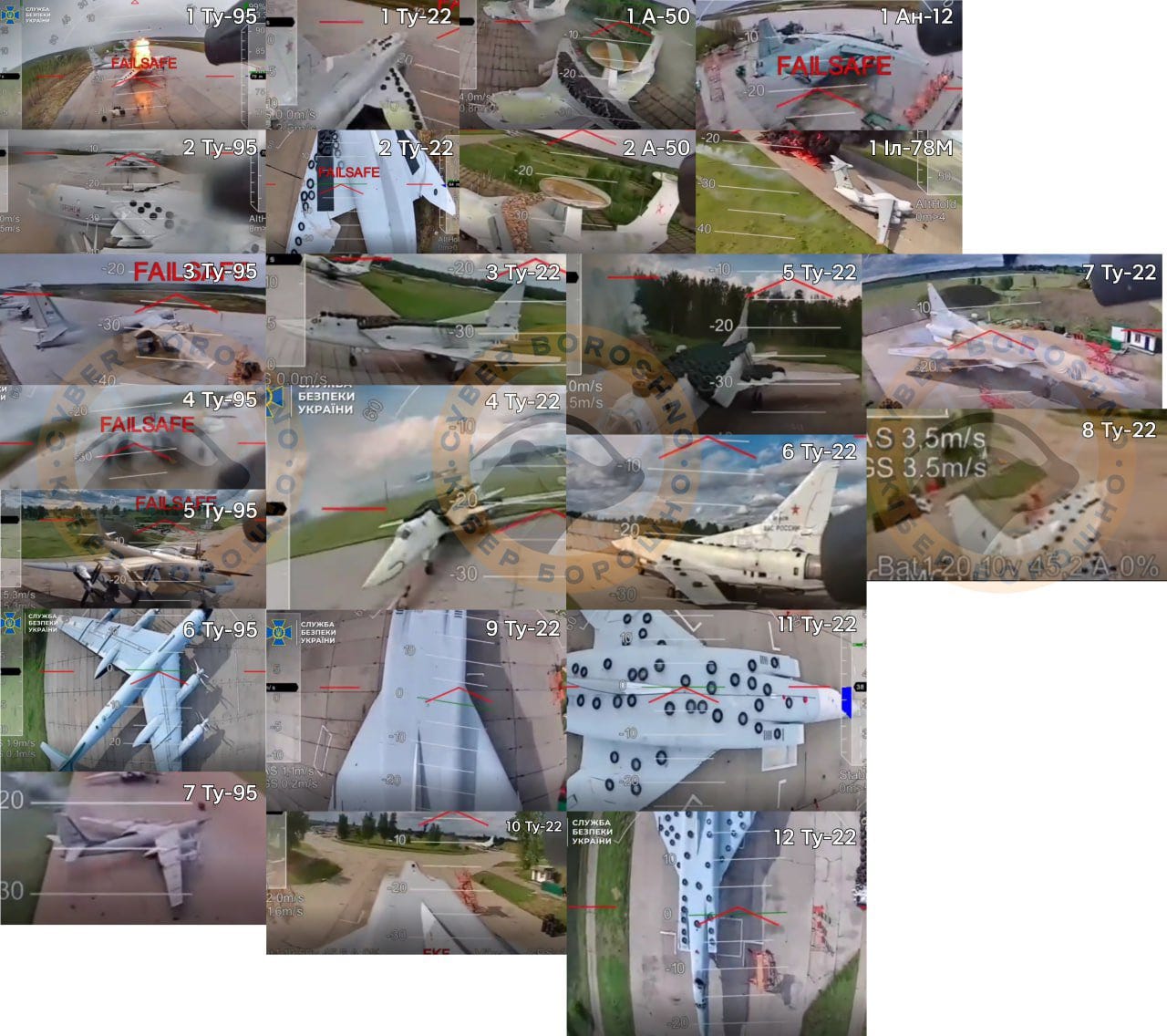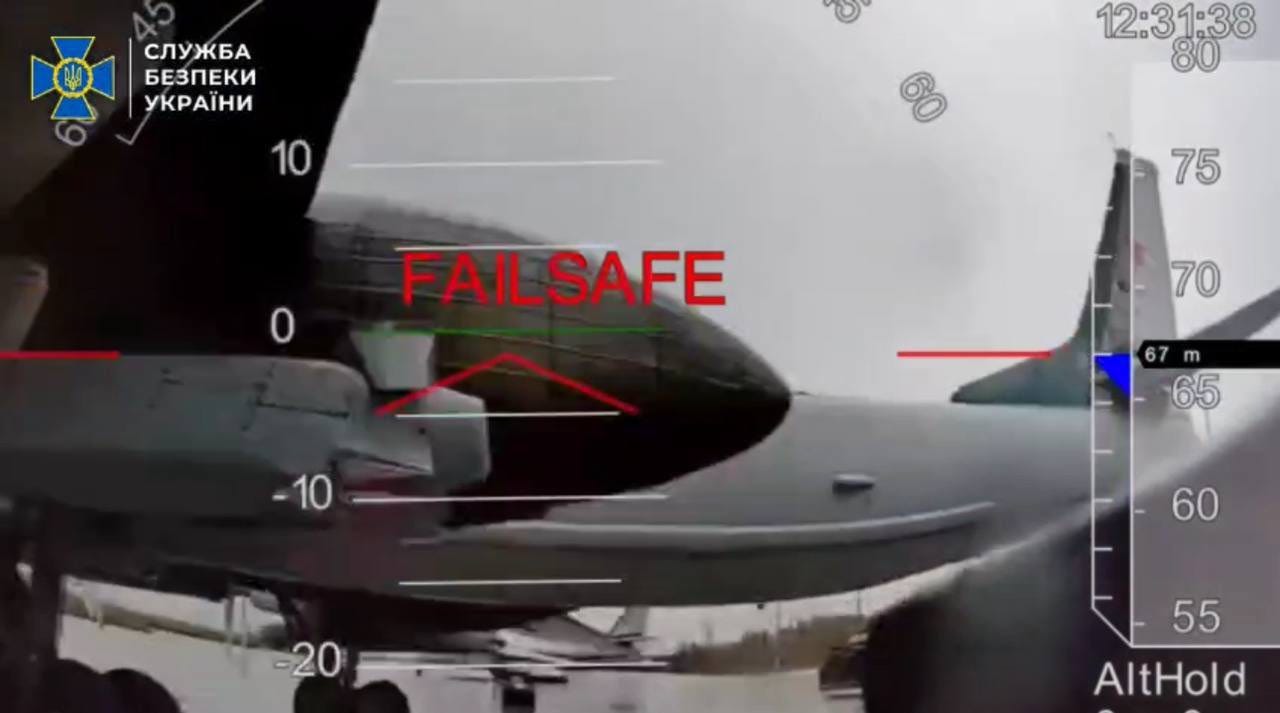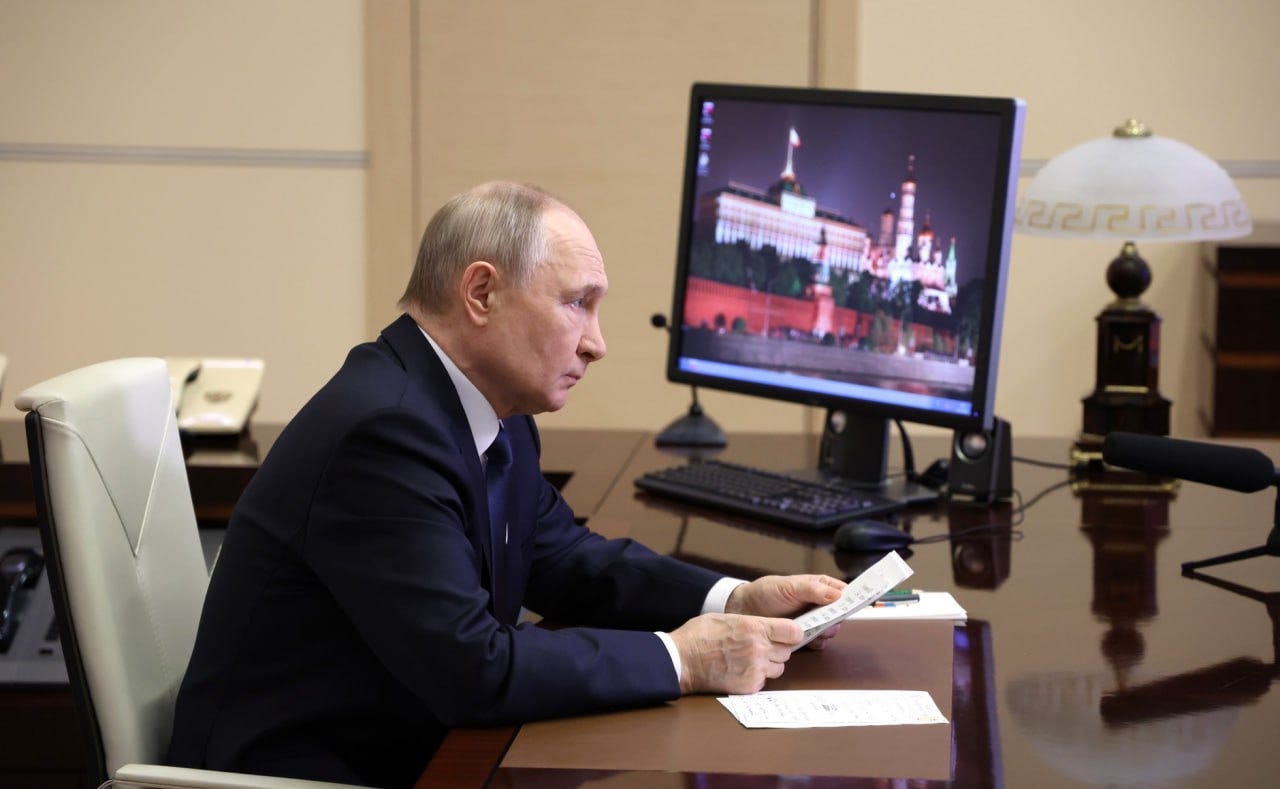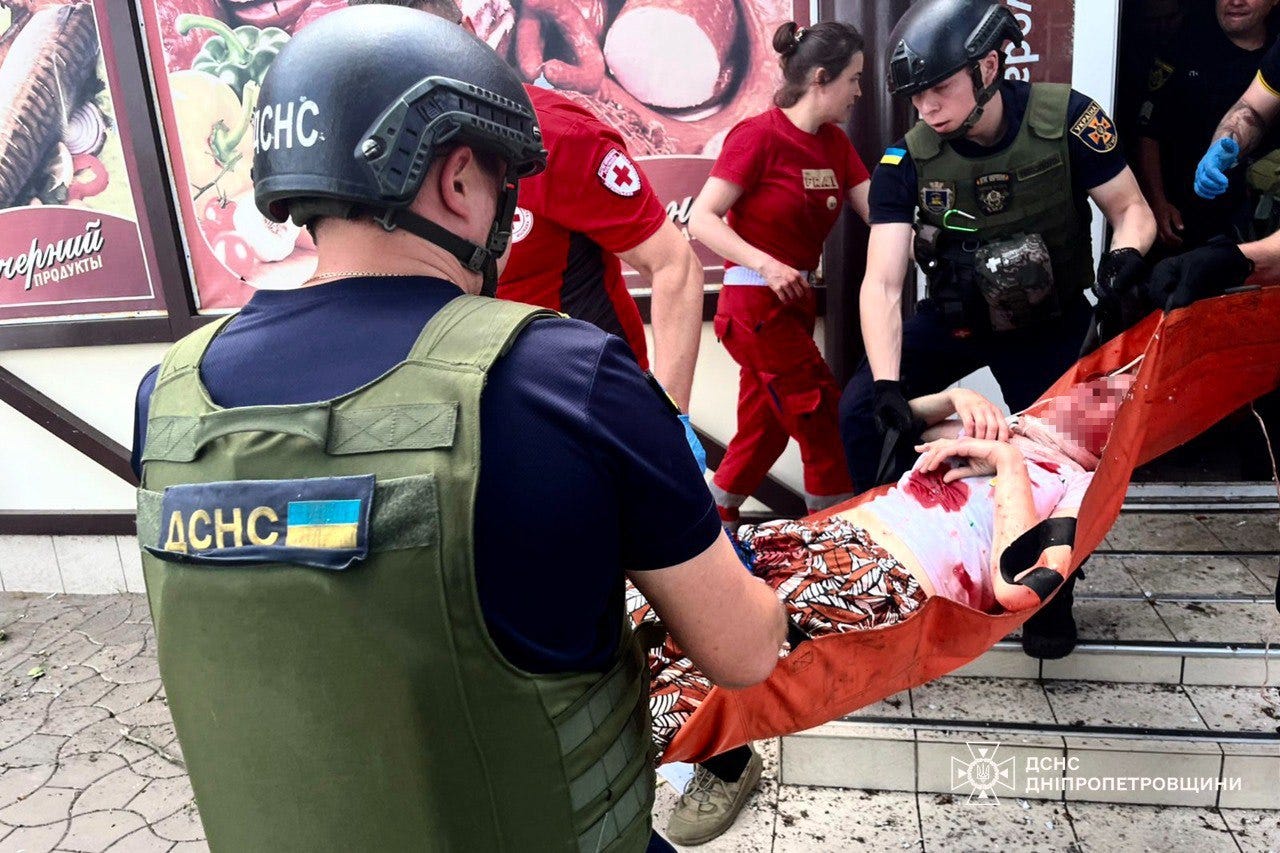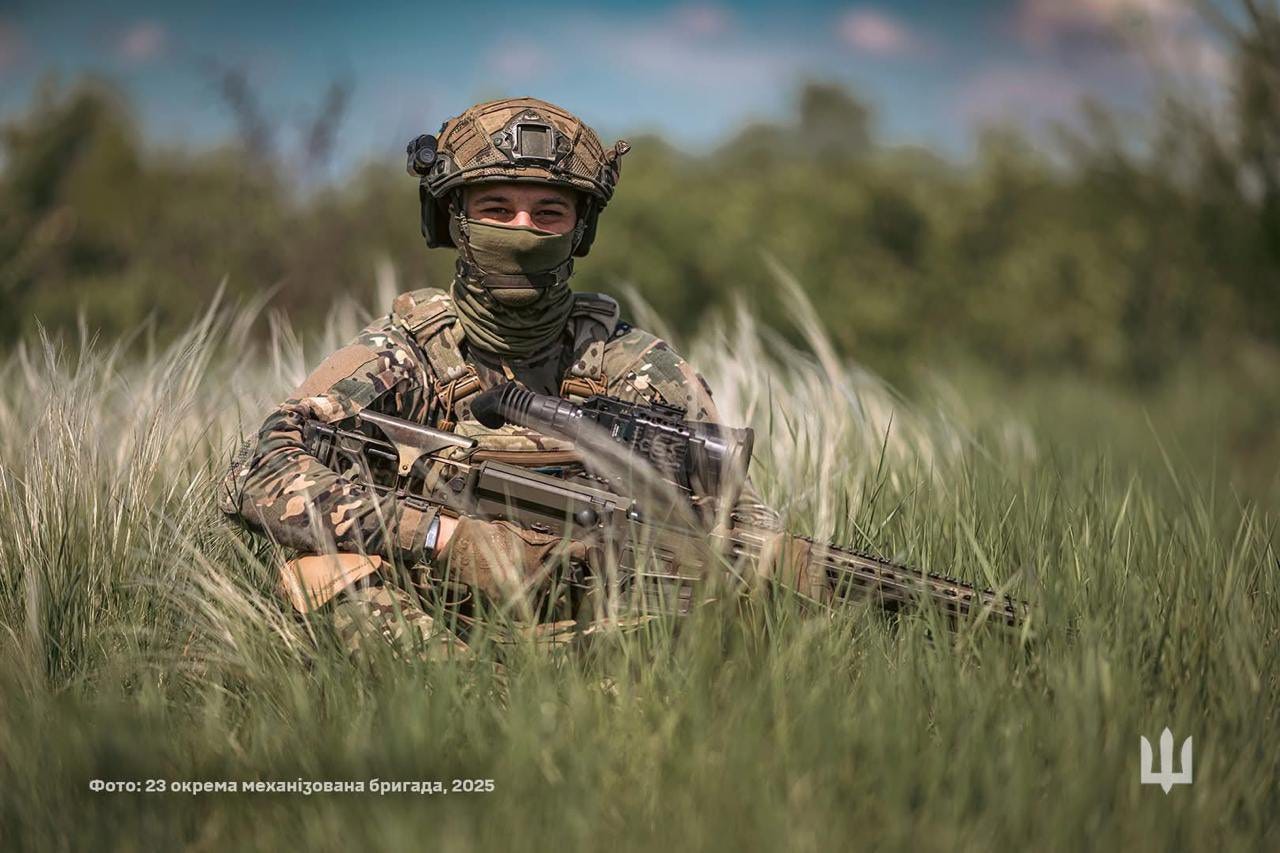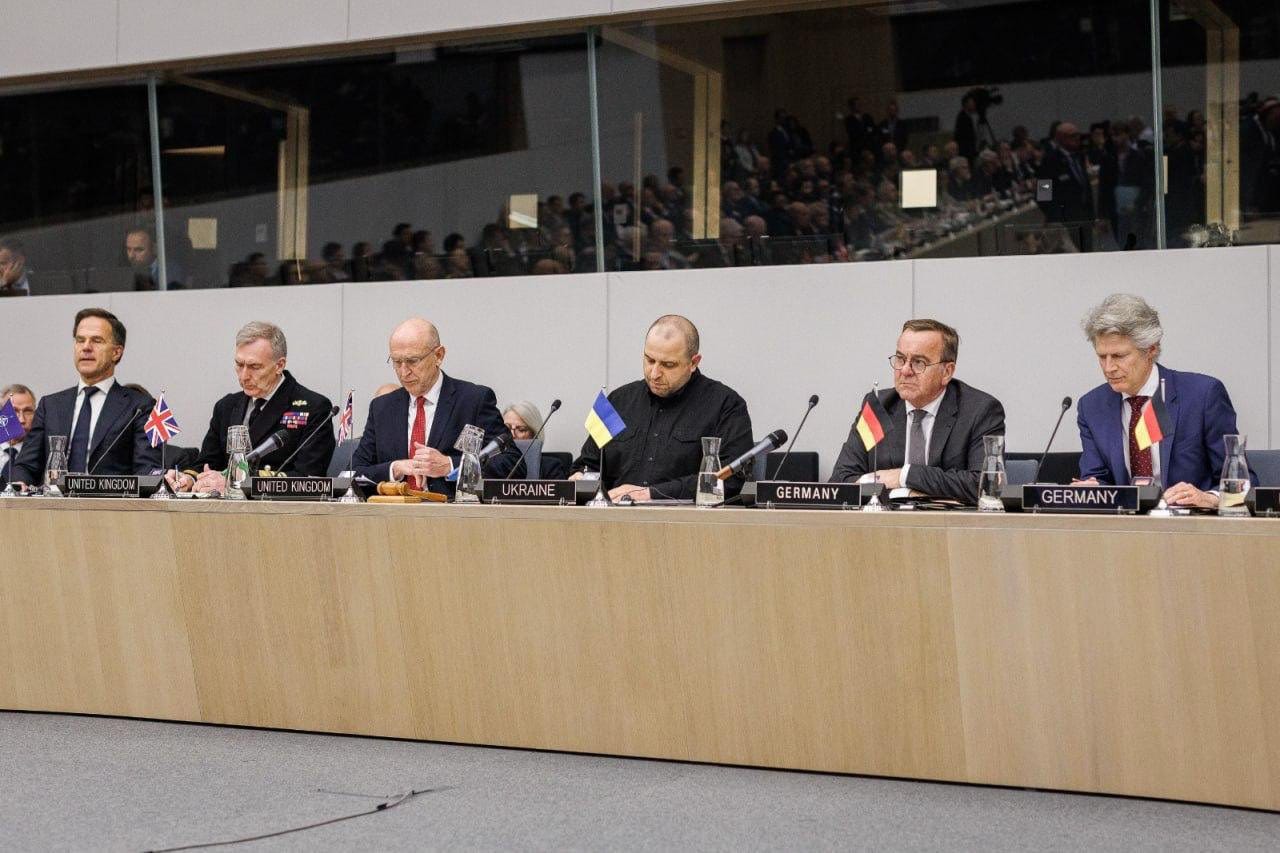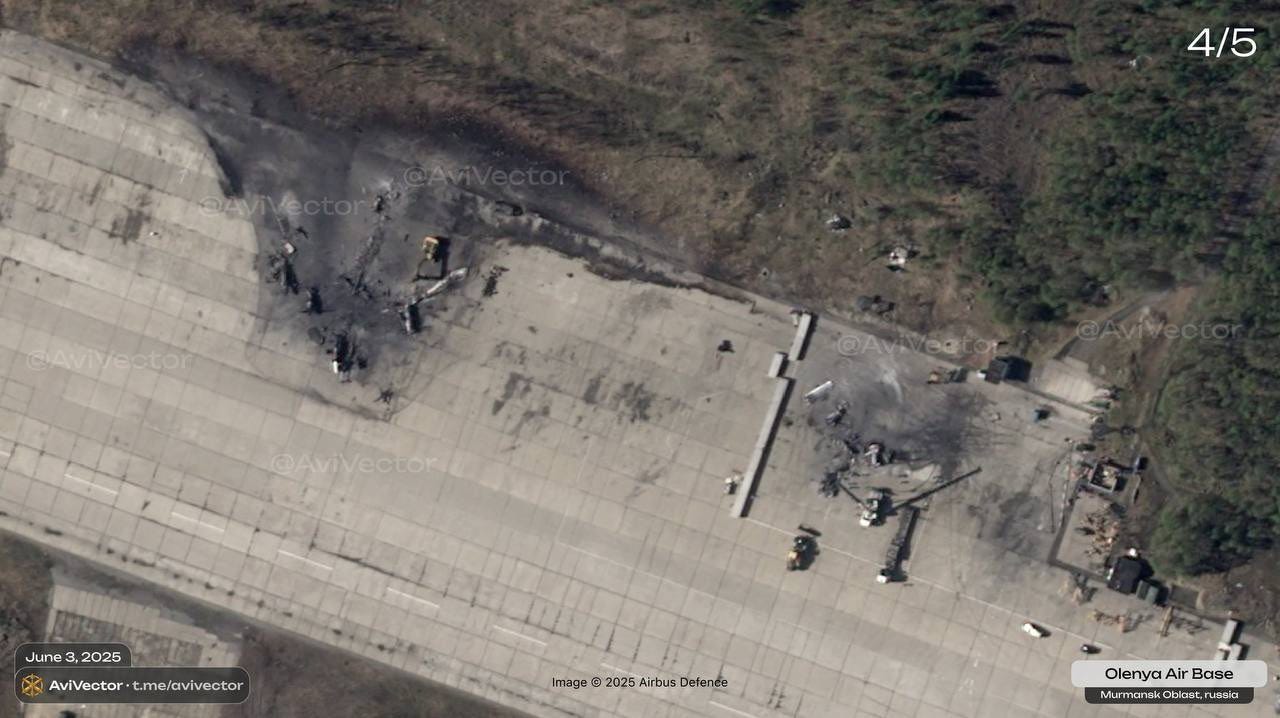
Operation Spider’s Web:
Today, civilians saw their first high resolution satellite images of Russia’s airfields in the wake of Ukraine’s innovative June 1st drone attack. Foreign intelligence services had already reported that their images showed a large number of damaged Russian aircraft. The newly released images paint a picture of an incredibly successful operation that will have a long-reaching impact on Russia’s air force.
MiltiaryNewsUA shared the official intelligence estimates writing, “According to the assessment of the North Atlantic Alliance (NATO), this was the “most successful operation” of Ukraine against Russian strategic aviation. “We see that at least 40 aircraft were damaged. From 10 to 13 aircraft were completely destroyed. This has a critical impact on Russian capabilities,” said a representative of the Alliance leadership on condition of anonymity. According to him, the attack destroyed 34% of the missile carriers available in Russia.”
Then, Ukrainian intelligence released a highlight reel of footage from drones involved in the attack. Cloooud reported, “In the footage of Operation "Web" from the SBU, you can see the hit of 22 aircraft, namely: x7 - Tu-95, x12 - Tu-22M3, x2 - A-50 AWACS, x1 - An-12, x1 - Il-78M. The satellite images showed the destruction of 8 Tu-95 strategic bombers so these are not all the affected aircraft.”
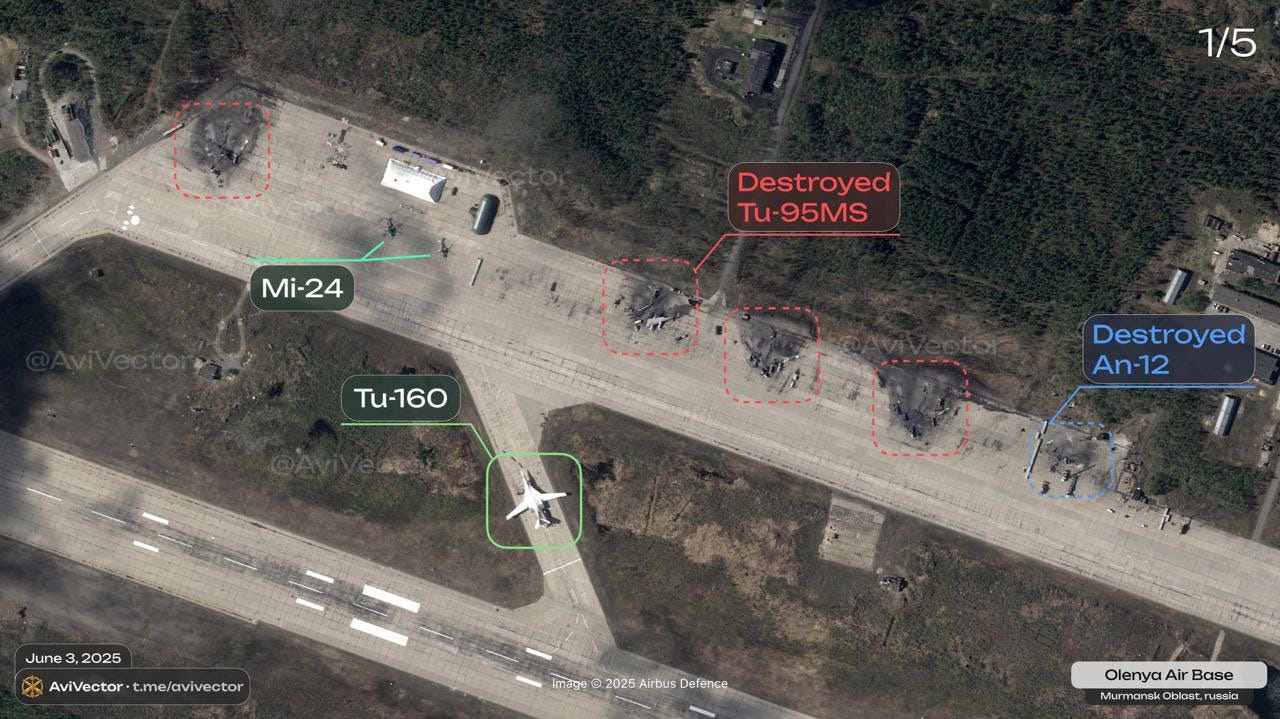
Then, the new satellite images began rolling in. Tyler Rogoway wrote, “Confirmed Losses Of Russian Aircraft Mount After Ukrainian Drone Assault. Some of the bombers were armed with cruise missiles when Ukraine’s drones rained down on them.” War Monitor wrote, “Satellite imagery of Belaya airbase confirms Ukrainian drones destroyed a total of 4 Tu-95 and 4 Tu-22M3s.” NOEL Reports added, “Satellite imagery of Olenya Airbase (Murmansk region) indicates the likely destruction of at least four Tu-95MS bombers, damage to an An-12, and possible damage to another aircraft on the runway.”
Some of the images revealed failed attempts by the Russian military to conceal the damage. Igor Sushko wrote, “Russians quickly replaced some of the destroyed aircraft with undamaged aircraft/decoys on their airfields, placing them in the exact same spots. Or taped them up so the damage won't be visible at the resolution of commercial satellite imagery.”
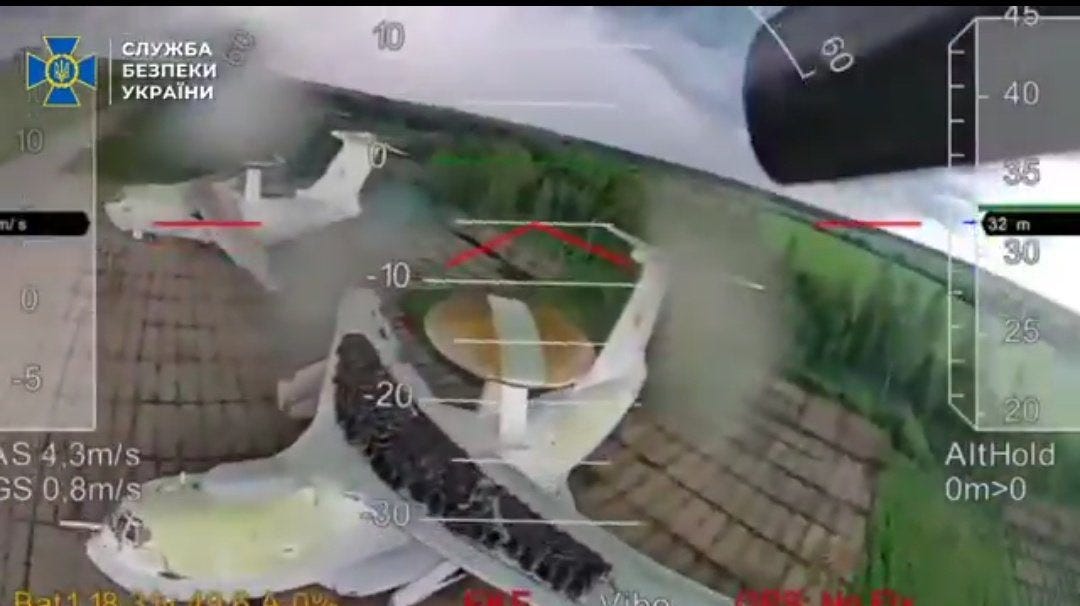
However, Ukrainian footage of the strikes on Russian A-50 early warning and control aircraft, supported Russian claims that these were mothballed examples. Ukrainian footage showed that the aircraft had their engines removed at the time of the attack. However, Ukrainian drones struck the aircraft’s radar arrays which could have been a useful source of parts for frontline aircraft.
Russian Reaction:
Russian dictator Vladimir Putin spoke for the first time since the attack, using the opportunity to call Ukraine’s military terrorists and spread doubt about the future of negotiations. Max Seddon wrote, “Putin has rejected Ukraine's offer of a summit with Zelensky and an immediate ceasefire. This is his first time addressing the major Ukrainian strikes last weekend, and a marked rhetorical escalation.” Visegrad 24 wrote, “Russia won’t hold any new peace negotiations with Ukraine. Putin made the statement today and called Ukraine “terrorists.””
It is worth reiterating that Operation Spider’s Web was a legitimate military operation. Enemy military airfields are legitimate targets in wartime. The fact that the operation was carried out clandestinely does not make it a war crime. On the other hand, Russia’s strategic air forces have regularly committed war crimes in their air campaign against Ukraine’s cities.
John Jackson noted that, “Those TU-95s were fueled and armed, ready to go kill innocent people: women, children, and my friends and loved ones. Every person that has criticized this attack stands the genocidal killers and against any concept of justice.” Jimmy Rushton wrote, “Russia’s definition of “terrorism” doesn’t include firing cruise missiles at a children’s hospital but does include destroying the bombers used to fire such missiles.”

US Response:
President Trump also addressed the attack today. He posted on social media indicating he spent more than an hour on the phone with Putin. Faytuks News tweeted, “President Trump says that Putin told him "very strongly" that Russia would have to respond to Ukraine's attacks on strategic bombers.” Trump faced criticism for not only accepting this Russian threat without criticism and for passing it along -- serving essentially as Putin’s messenger.
Mustafa Nayyem wrote, “So let me get this straight: the first person to announce Putin’s “decisive response” to Ukraine’s operation wasn’t Putin himself — it was Donald Trump. And not just announce it, but present it as part of a “good conversation.” No condemnation. No call for restraint. No consequences. Just a fact.” Richard Blumenthal noted that, “Putin doesn’t have to retaliate. Just like Putin didn’t have to invade Ukraine. And Trump doesn’t have to be OK with it. Nothing about this is inevitable—we get to decide whose side we want to be on, and I’m standing with Ukraine, not Russia.” Another twitter noted that Ukraine’s attack itself was retalition for Russia’s nightly terror attacks.
Russian Air Attacks:
Those attacks continued today as Russia used drones, missiles, and bombs to terrorize Ukraine’s civilian population. The Kyiv Post wrote, “Putin’s forces launched Shahed drones and missiles on Kharkiv overnight, targeting civilian infrastructure. Several civilians were injured in the attack.” The Ukrainian Review wrote, “The Russians hit a bioethanol plant in Lebedynska community in Sumy region. Tanks were damaged, molasses spilled. About 10 private houses were also damaged due to shelling. There were no injuries or deaths.” Finally, Kvist P reported, “Russian terrorists bombed a grocery store in Nikopol. This is how they punish Ukraine for targeting their military.”
Ground War:
Russian forces were also active at the front today as the summer campaign season continues to ramp up. Blyskavka wrote, “Occupants are trying to break through to the administrative borders of Dnipropetrovsk, Donetsk and Zaporizhia regions, – said Vladyslav Voloshyn, spokesman for the Southern Defense Forces. "It's not too far for them to go. It's about fifteen kilometers away", – Voloshyn added.”
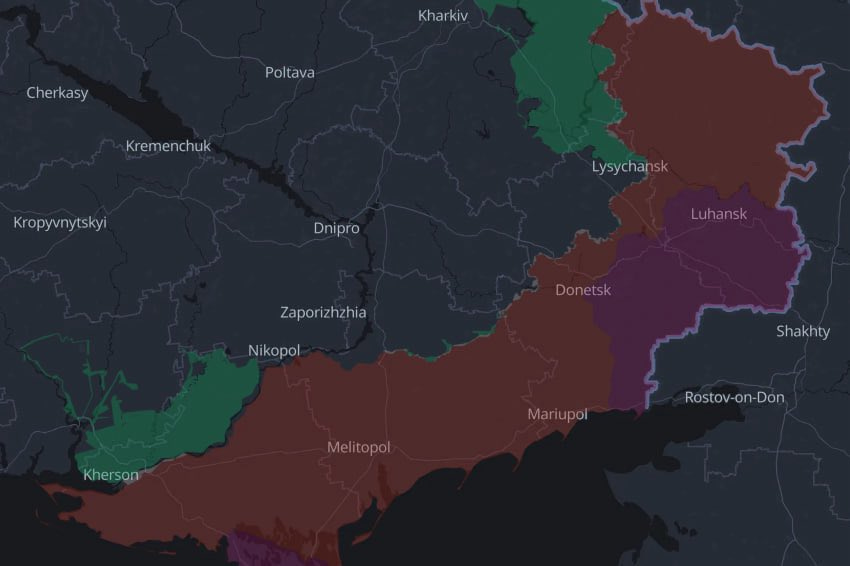
John Helin reported, “The Russian rate of advance picked up in May. According to our data the Russians occupied 538 square kilometers, over twice the territory occupied April. This is the second highest Russian monthly rate of advance since 2022, only surpassed by the November of last year.”
In one positive note, Ukrainian forces had local success in Russia’s Kursk Oblast. Vijesti reported, “225th Assault regiment cooperation with Skala regiment launching attacks eastern Tetkino, they advanced 2km from the border line inside Kursk Province. Almost Army far 3k from Tetkino center, officially Tetkino under siege from 3 axis.”
Foreign Aid:
With increased fighting comes increased demand for vital ammunition and supplies. Fortunately, Ukraine’s European allies continue to step forward with new pledges of military and humanitarian aid. At today’s Ramstein format meeting on Ukrainian military aid, leaders from across Europe announced new aid packages for the AFU.
Roman Sheremeta summarized: A new Ramstein-format meeting was held in Brussels. Here are the key outcomes: United Kingdom will allocate a record £350 million for drones. In 2025, Ukraine is set to receive 100,000 UAVs. Germany approved a new military aid package worth €5 billion. Berlin will fund long-range weapons to be produced in Ukraine and will also deliver air defense systems, ammunition, and other weaponry. The Netherlands will provide a €400 million aid package, which includes a mine countermeasure vessel, boats, and naval drones. Belgium will provide Ukraine with €1 billion annually until 2029. It will also transfer a mine countermeasure vessel. Norway is allocating $700 million for drones to support Ukraine’s defense industry, along with $50 million for the NSATU Trust Fund. Canada will contribute $45 million for drones, electronic warfare equipment, and armored vehicles including the Coyote and Bison. Sweden will provide €440 million for international programs to procure artillery shells, drones, and other arms for Ukraine. Overall, in 2025, Ukraine’s security assistance is projected to exceed the levels of all previous years of the full-scale war.




